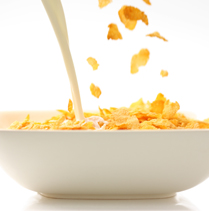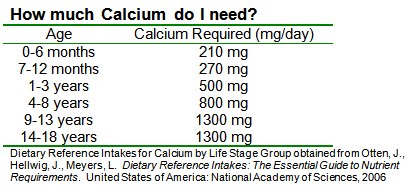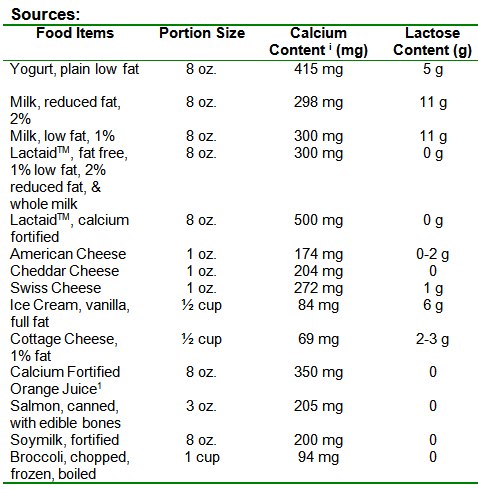
Learn about lactose intolerance, common symptoms, and learn these quick tips to make sure your lactose intolerant child is getting enough calcium!
Lactose intolerance is the inability to digest significant amounts of lactose, which is the milk sugar found in dairy products. Lactose intolerance is caused by a shortage of the enzyme lactase, which is normally produced by the cells lining the small intestine. People who lack this enzyme are unable to completely digest lactose into its simpler forms: glucose and galactose.
The severity of lactose intolerance varies by person, with many people able to tolerate small amounts of lactose. (1) Common symptoms of lactose intolerance include digestive discomfort, bloating, cramping, gas pains, and loose stools. Note that lactose intolerance is different from a milk allergy. If you suspect that your child has lactose intolerance, talk with your child’s physician. To diagnose lactose intolerance, the physician will review your child’s symptoms and can perform a medical test. (1)
Foods with Lactose
While milk and dairy products are the more commonly known lactose-containing foods, other foods that may contain lactose include the following:
- bread and other baked items
- instant soups and instant potatoes
- pastries and processed foods
- coffee creamers
- some breakfast cereals
- dressings
- processed meats
- processed snacks
- margarine
- protein powders
- candy
- some medications
Look for the following ingredients on the food label. If any of these are present, lactose is present in the product:(1)
- Milk or milk by-products
- Lactose
- Milk by-products or dry milk powder
- Whey
- Curds
Tips That May Improve Lactose Tolerance
There are certain things you can try that may help improve lactose tolerance. These include the following: (1)
- Pair any lactose-containing foods with other foods. For example, instead of feeding your child plain cheese, make a grilled cheese sandwich or a quesadilla.
- Hard cheeses have less lactose than milk or softer cheese, so they may be better tolerated.
- You can try slowly introducing small amounts of lactose to your child’s diet. For some people, this may improve their ability to digest lactose.
- Yogurt is often tolerated in individuals with lactose intolerance.
- Lactose-reduced milk such as Lactaid™ or lactose tablets can be utilized to minimize problems associated with lactose intolerance.
Calcium-Rich Food Choices for your Child with Lactose Intolerance
Since many lactose-containing foods are rich sources of calcium, it is important to ensure your child consumes enough calcium in her diet. Calcium is important to help promote strong bones, healthy teeth, proper blood clotting, and muscle contraction. To learn more about why calcium is important for your child’s health, see The Calcium Connection.
Sources of Calcium
Milk and dairy products aren’t the only foods that have calcium. Other sources include canned fish with soft bones, green leafy veggies and broccoli, dried beans, almonds, calcium-set tofu, and certain fortified cereals, juices and milk alternatives. (2) To ensure your child is getting enough calcium in her diet, refer to the charts below to determine how much calcium your child needs and how food sources of calcium compare.


Vitamin D
Vitamin D is another important nutrient that works alongside calcium. It may also be low in your child’s diet if she is lactose intolerant. Vitamin D is present in a limited number of foods, including some fish such as salmon and tuna, eggs, and liver. Some foods are also fortified with vitamin D, including milk, some juices, milk alternatives, yogurts, and cereals. We can produce vitamin D in our skin with unprotected contact with the sun. However, in more northern latitudes, this will not be sufficient to meet our vitamin D needs, so ensuring adequate vitamin D intake is important. (1)
Still have questions? Talk with your doctor or a registered dietitian to make sure your child is getting in all of the nutrients she needs.












